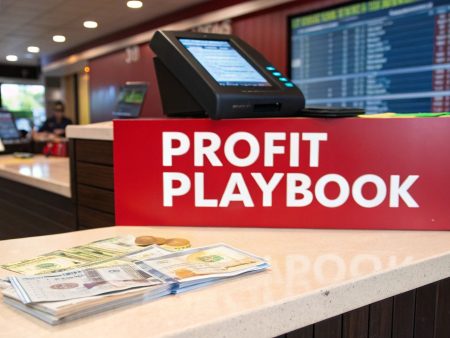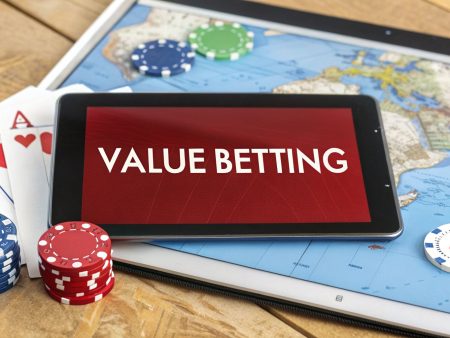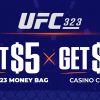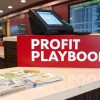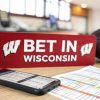At its core, reading sports betting odds is pretty simple. The numbers tell you two things: how likely a team is to win and how much cash you’ll pocket if they do. For example, a favorite at -150 odds means you have to risk $150 just to win $100. On the flip side, an underdog at +130 means a $100 bet gets you $130 in profit. Simple, right?
Your First Step in Sports Betting
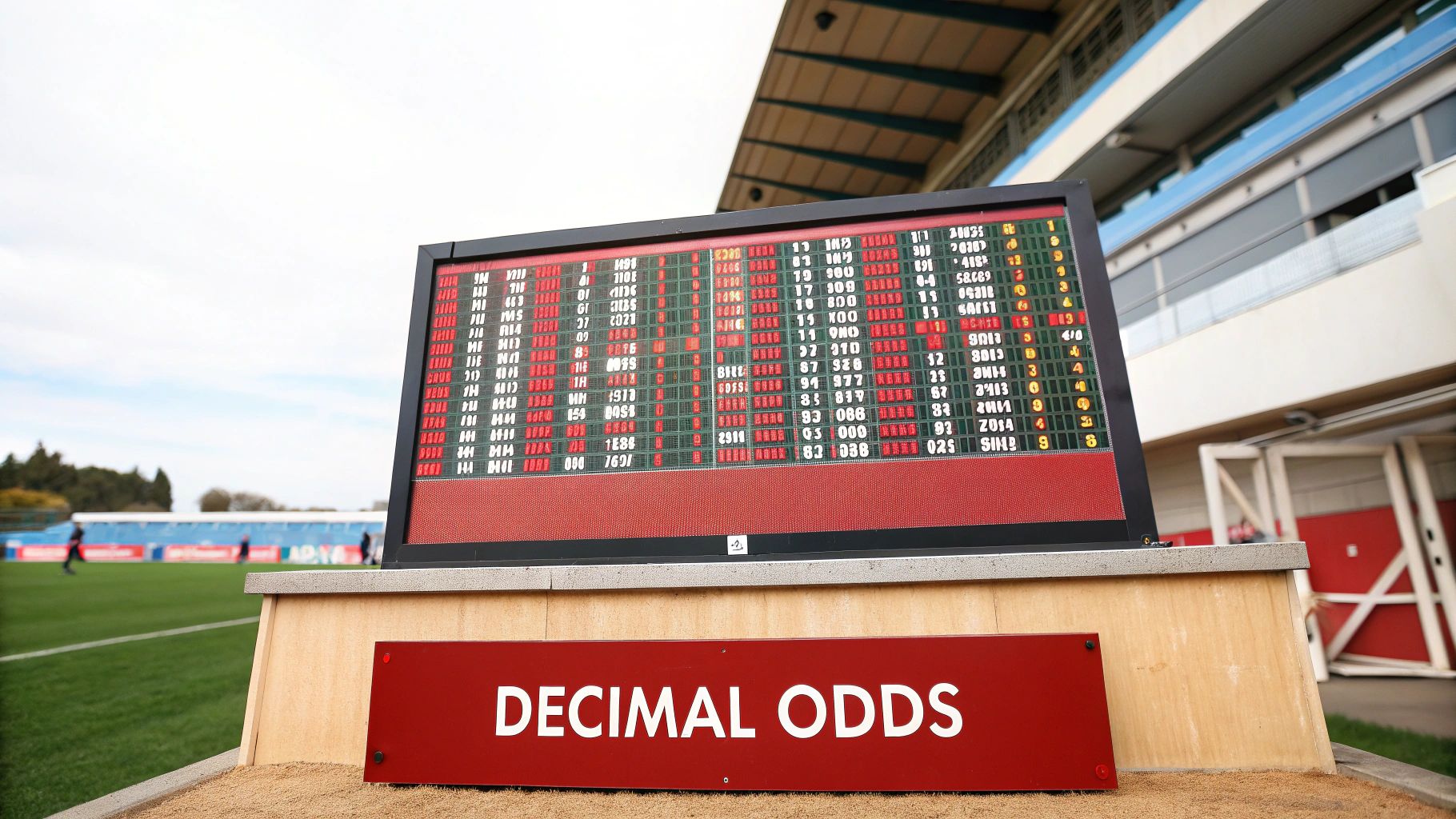
Before you even think about putting money down at offshore sites like MyBookie or BetUS, you have to learn to speak the sportsbook's language. The odds are the absolute foundation of every single bet you'll ever make, and they communicate two critical pieces of information:
- Implied Probability: This is the bookie's educated guess on the chances of something happening. A team with -200 odds is seen as a much stronger favorite than a team at +150.
- Potential Payout: The odds spell out exactly how much you can win compared to what you risk. This whole game is a constant calculation of risk versus reward, and it all starts with the odds.
Getting these numbers wrong is the absolute fastest way to see your bankroll disappear. Think of it this way—you wouldn't sit down at a poker table without knowing a flush beats a straight. The same logic applies here. Mastering the odds isn't just a good idea; it's the most essential first step to placing smart, informed bets at offshore sportsbooks like Bovada, Xbet, or Sportsbetting.ag.
The Three Main Odds Formats
When you start browsing different sportsbooks like Bovada or Sportsbetting.ag, you'll see odds displayed in a few different ways. Most commonly, you'll run into American (moneyline), fractional, and decimal formats. American odds are what you see most in the US, used by top offshore sites like MyBookie and BetUS, and they rely on a minus sign ( – ) for favorites and a plus sign ( + ) for the underdog.
To give you a quick overview, here's how they break down.
Quick Guide to Odds Formats
| Odds Format | What It Shows | Example | Commonly Used In |
|---|---|---|---|
| American | How much to bet to win $100 (or win on $100) | -110 | United States |
| Decimal | Total payout for a $1 bet (stake + profit) | 1.91 | Europe, Canada |
| Fractional | Profit relative to your stake | 10/11 | UK, Ireland |
Each style presents the exact same information, just dressed up a little differently.
Your real goal here isn't just to get comfortable with one format. It's to become fluent in all three. That skill is what lets you "line shop" effectively across different books like Xbet and BetAnything, making sure you're always squeezing out the best possible value for your money.
We're going to dive deep into each type, but for now, just remember they're all different dialects of the same language—the language of probability and profit. For a more complete breakdown, check out our guide on https://usasportsbooklist.com/sportsbooks/how-to-read-betting-lines/. If you're serious about this, learning the language is non-negotiable.
Decoding American Moneyline Odds
Hop on pretty much any offshore sportsbook, from BetUS to Sportsbetting.ag, and the first thing you'll see are American odds. This format, often called moneyline odds, is the standard in the US, and it's way simpler than it looks. The whole system is built around the idea of a $100 bet.
The key is the tiny plus (+) or minus (–) sign sitting next to the number. That one symbol tells you everything you need to know about who the bookie thinks will win and who's the longshot.
- A minus sign (-) always points to the favorite. The number shows you how much cash you need to risk to win a $100 profit.
- A plus sign (+) always marks the underdog. That number is the profit you’ll pocket if you bet $100 and they pull off the upset.
This simple system gives you a quick snapshot of the risk and reward for any game on the board at sites like Bovada or Xbet.
Breaking Down the Favorite and Underdog
Let's put this into practice. Say you're checking out an NFL line on a site like MyBookie and see the Kansas City Chiefs at -150 against the Denver Broncos at +130.
The -150 next to the Chiefs tells you they're the favorite. To make a $100 profit on a Chiefs win, you'd have to lay down $150. If they get the W, you get your $150 back, plus the $100 win, for a total payout of $250.
On the other side, the +130 on the Broncos means they're the underdog. If you bet $100 on Denver and they win, you'd rake in $130 in profit. Your total return would be $230 (your original $100 stake plus your $130 profit).
This screenshot from Sportsbetting.ag shows you what real moneyline odds look like for a few MLB games.
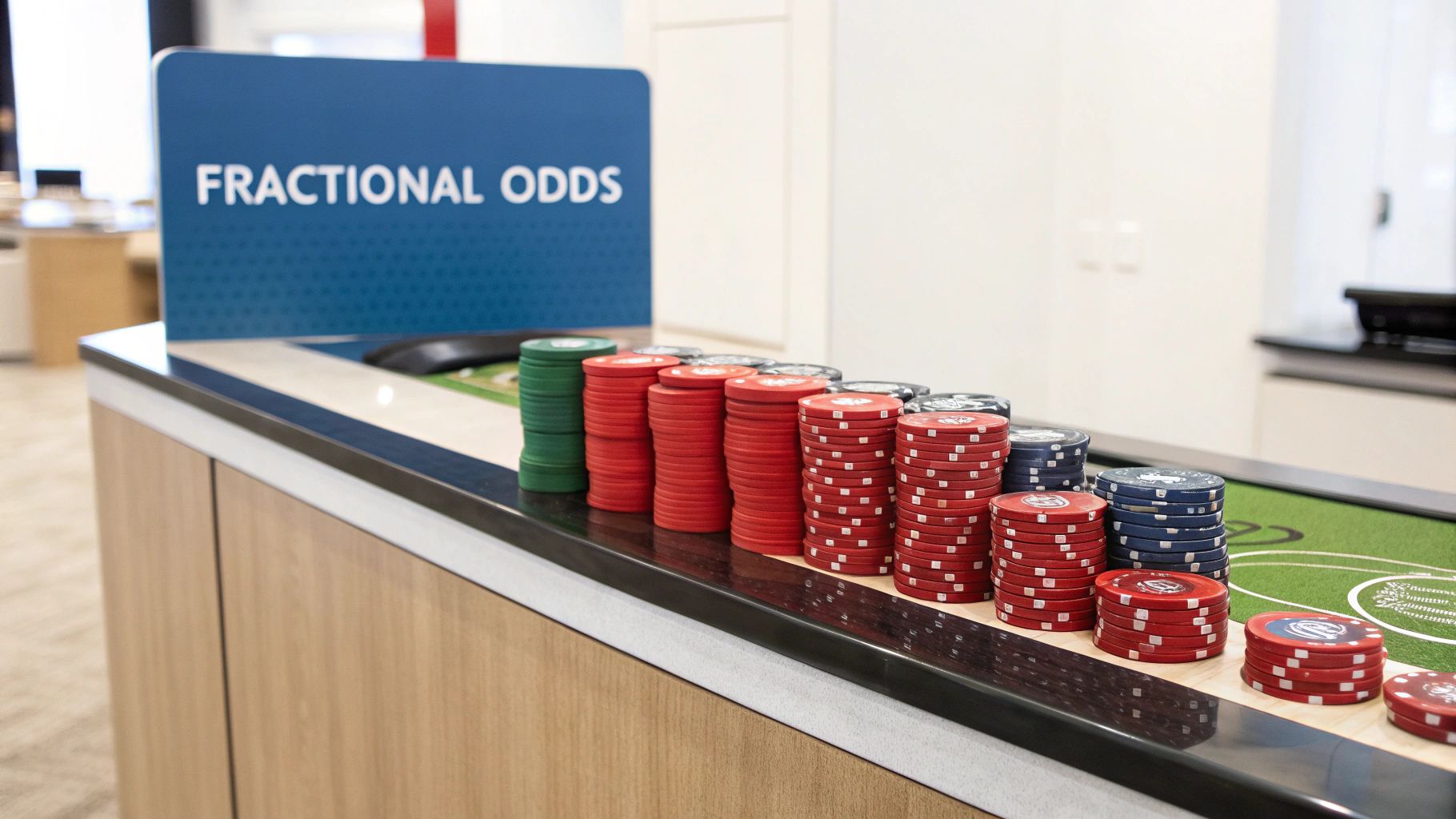
You can see the New York Yankees are the -141 favorite, while the Baltimore Orioles are the +126 underdog. The odds immediately tell the story of the expected outcome and what you stand to win.
Calculating Payouts for Any Amount
Of course, you’re not stuck betting exactly $100 or $150. That $100 figure is just the baseline to make the math easy. The odds scale to any amount you want to wager, and top-tier sportsbooks like Bovada or Xbet handle all the calculations for you instantly.
But if you want to do the math yourself, here are the simple formulas:
- For Favorites (-): (Stake / Odds) x 100 = Potential Profit
- For Underdogs (+): (Stake / 100) x Odds = Potential Profit
Pro Tip: A classic rookie mistake is to only bet on heavy favorites because they feel like a lock. Sure, they win more often, but the payouts are small and the risk is high. One unexpected upset can completely wipe out the profits from several of your previous wins. A truly sharp betting strategy is about finding value on both sides of the line at offshore sites like MyBookie or BetUS, not just chasing the most obvious winner.
Getting a handle on this balance between risk and reward is your first major step from being a casual fan to a sharp bettor. It's not just about who wins the game; it's about betting on the right numbers.
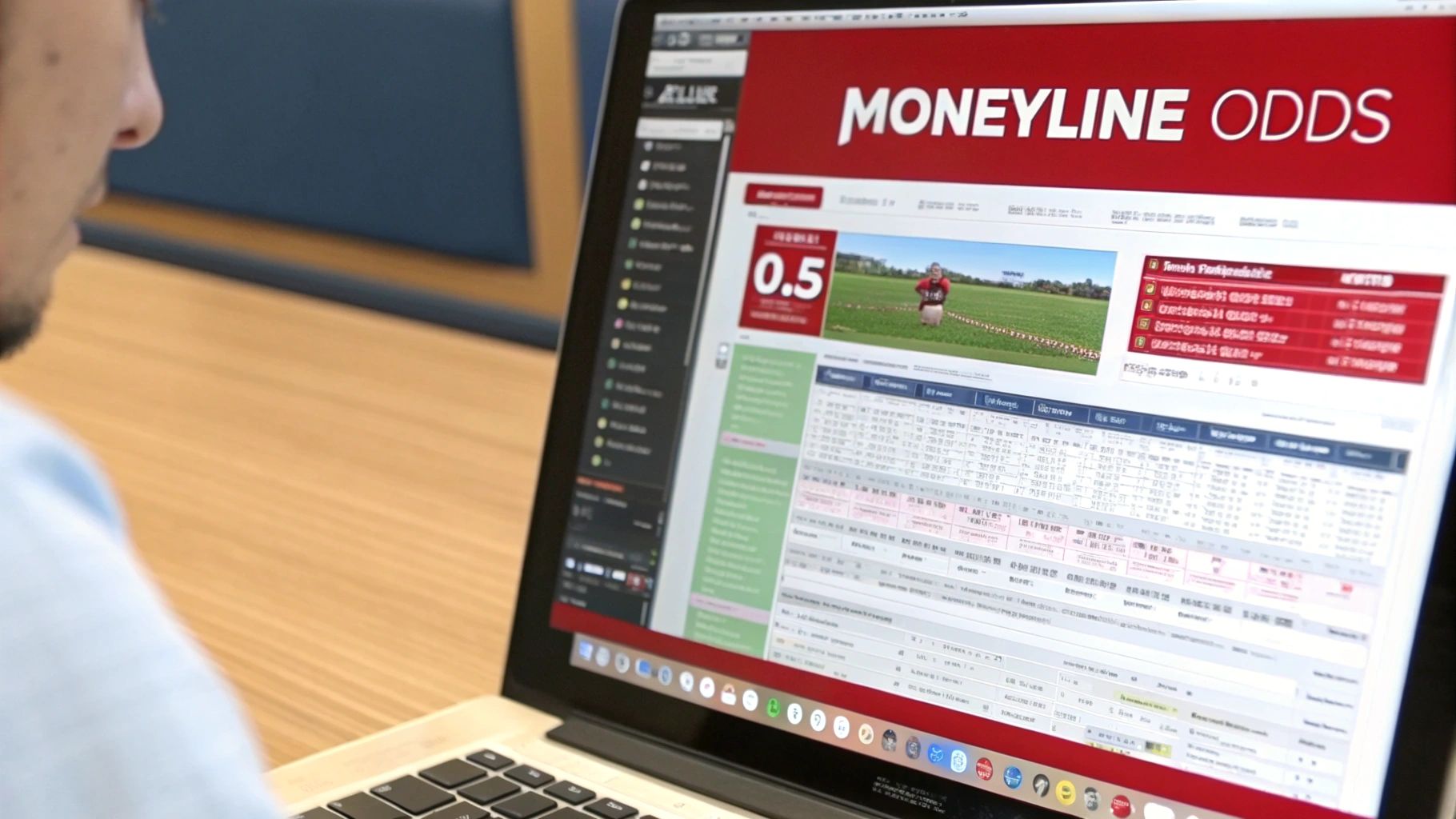
While American odds are the default in the US, you’ll quickly run into different formats when you venture onto international betting sites. Offshore books like BetAnything or the UK soccer markets on Xbet often use fractional and decimal odds. Getting a handle on these is an absolute must for any bettor who wants to shop for the best lines across the globe.
This isn't just about different numbers; it's a reflection of diverse betting cultures. American odds are king in the States, but fractional odds are woven into the fabric of UK and Irish betting, with deep roots in horse racing and football. Decimal odds, on the other hand, are the standard across most of Europe, Australia, and Canada, loved for their straightforward calculation of your total payout. You can learn more about the evolution of betting odds to get a deeper sense of these global market preferences.
Cracking the Code on Fractional Odds
Fractional odds, which you'll see all over UK-facing sportsbooks, might look a little archaic at first, but they're actually incredibly direct. Think of a fraction like 5/1—you just read it as "five-to-one."
The logic is simple:
- The first number (the numerator) is how much profit you win.
- The second number (the denominator) is how much you have to stake.
So, with 5/1 odds, for every $1 you bet, you stand to win $5 in profit. A $10 wager would net you $50 in profit, giving you a total return of $60 (your $50 win plus your original $10 stake back).
Of course, you’ll also see fractions that look flipped, like 1/4 ("one-to-four"). This just means you're looking at a heavy favorite. In this scenario, you'd need to risk $4 just to win $1 in profit.
The Simplicity of Decimal Odds
Decimal odds are easily the most straightforward format out there, which explains why they're so popular across Europe and on sites like Sportsbetting.ag. The number you see represents the total return—your original stake plus your profit—for every $1 you wager.
Let's say you see odds of 3.50. The math is just simple multiplication:
Stake x Decimal Odds = Total Payout
A $10 bet at 3.50 odds means a total payout of $35. To figure out your pure profit, just subtract your initial stake: $35 – $10 = $25 profit. Any decimal number under 2.00 signals a favorite, since your total return will be less than double your stake.
Becoming fluent in all three odds formats is a genuine game-changer. It unlocks the ability to compare lines across a much wider range of sportsbooks, from Bovada to MyBookie. This is how sharp bettors operate—they always find the best possible price for their bets.
Quick Odds Conversion
The best part? All three formats are just different ways of saying the same thing. For example, that standard -110 line you see on almost every point spread is the same as 10/11 in fractional odds and 1.91 in decimal odds. Once you can read sports betting odds across all formats, you can spot value no matter where you choose to bet, whether it's BetUS, Xbet, or BetAnything.
Finding Value with Implied Probability
This is where you graduate from simply reading the odds to thinking like a sharp bettor. Those numbers you see on sites like Bovada or MyBookie aren't just about payouts. They are the sportsbook's direct statement on how likely an outcome is.
Learning to translate these odds into percentages—what we call implied probability—is the secret to spotting genuinely profitable bets.
Think of it this way: every set of odds implies a certain chance of that event happening. For instance, the standard -110 line on an NFL point spread suggests the team has a 52.4% chance of covering. This simple conversion lets you compare the sportsbook's opinion against your own.
If your research tells you a team has a 60% chance to win, but the odds only imply a 52.4% chance, you've just found a value bet. That gap between your analysis and the bookmaker's line is exactly where long-term profit is made.
How to Calculate Implied Probability
Figuring out implied probability is easier than it sounds, and it's a skill that will fundamentally change how you look at betting lines on any sportsbook, from BetUS to a site like Sportsbetting.ag. The formulas are a bit different for each odds format, but the goal is always the same: turn the odds into a simple percentage.
This infographic breaks down the core formulas you'll need for decimal and fractional odds.
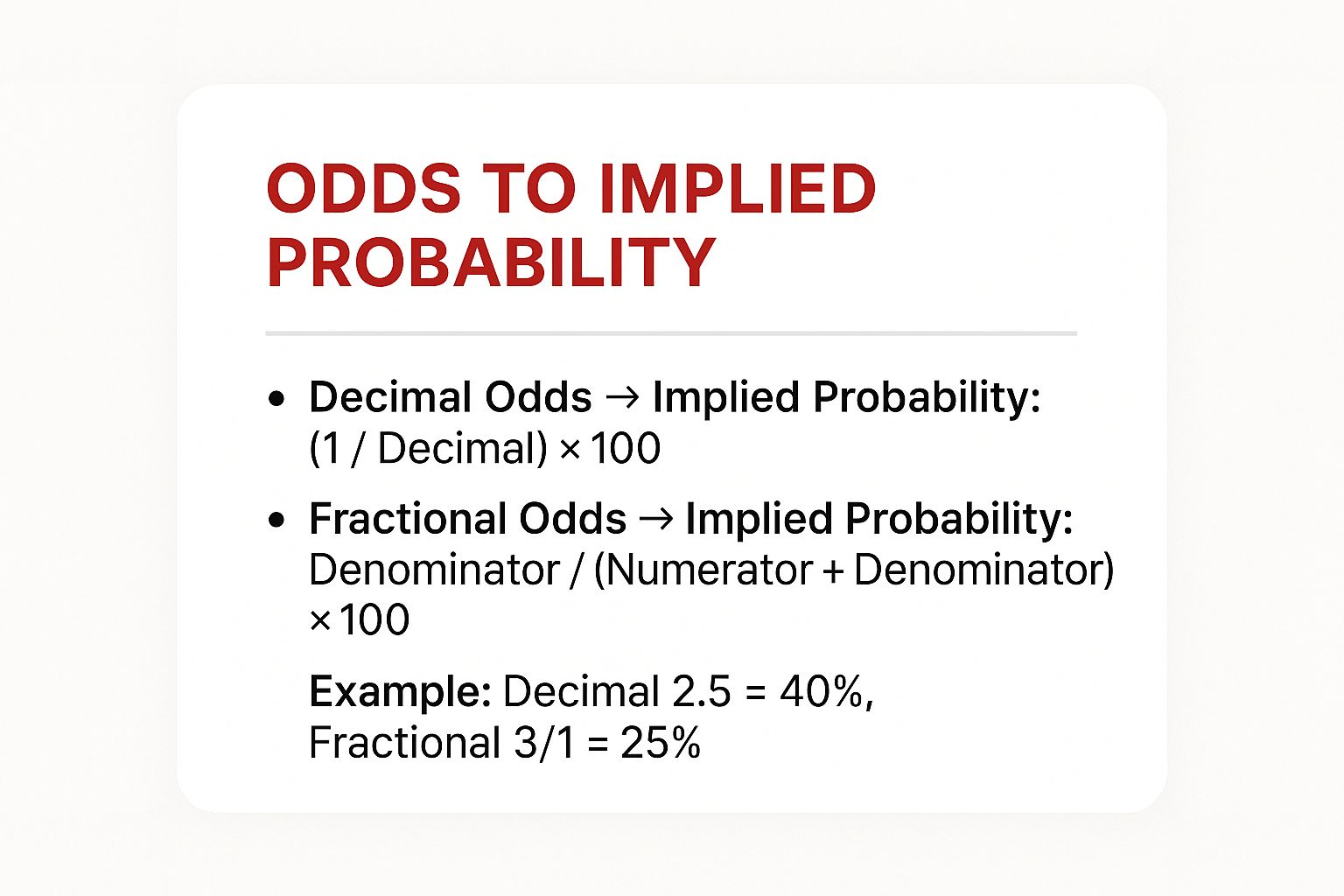
As you can see, it's just a bit of simple math. But mastering these calculations is a non-negotiable step toward developing smarter, more analytical sportsbook strategies.
The heart of successful sports betting isn't about predicting winners. It’s about consistently finding wagers where the true probability of an outcome is higher than what the odds imply. That's the entire game.
Understanding these calculations moves you past gut feelings and into making data-driven decisions. Once you can instantly see the probability baked into a line on Xbet or Sportsbetting.ag, you can start to question whether you agree with it.
For a quick reference, here's a cheat sheet that converts some of the most common American odds into their implied probabilities.
Implied Probability Cheat Sheet
| American Odds | Implied Probability (%) |
|---|---|
| +500 | 16.7% |
| +300 | 25.0% |
| +200 | 33.3% |
| +150 | 40.0% |
| +100 | 50.0% |
| -110 | 52.4% |
| -150 | 60.0% |
| -200 | 66.7% |
| -300 | 75.0% |
| -500 | 83.3% |
Keep this handy. Over time, you'll start to recognize these percentages without even needing to look them up, giving you an edge when you're scanning the boards for value.
Understanding the Vig or Juice
Ever calculated the implied probabilities for both sides of a bet and noticed they add up to more than 100%? That extra bit is the sportsbook's built-in advantage. We call it the vigorish or "vig"—you'll also hear it called the "juice." It's how they guarantee a profit, no matter who wins.
This built-in margin is essentially the commission you pay for placing a bet. In major markets, this vig typically falls between 4% and 7%. Take that classic -110 line on an NFL game; the math shows you need to win about 52.4% of your bets just to break even. That's the power of the vig.
Recognizing the vig is critical for a few key reasons:
- It sets your break-even point. The higher the juice, the higher your win rate needs to be to turn a profit.
- It shows why line shopping is vital. A small difference in odds between sites like BetAnything and Bovada can mean a big difference in the vig you’re paying.
- It explains why finding good bets is hard. You're not just trying to beat the sportsbook's prediction; you have to beat their commission, too.
Ultimately, your goal is to find lines where your perceived value is greater than the sportsbook's built-in vig. That’s how you win in the long run.
Applying Your Knowledge to Real Bets
Okay, theory is one thing, but the real test is seeing how this all plays out on an actual betting line. Let's walk through a few common scenarios you'll find on sportsbooks like MyBookie or BetUS and turn these concepts into a practical process you can use every time.
Imagine you're scrolling through the NBA lines and you see a moneyline bet for the Los Angeles Lakers at -220 against their rival, the Boston Celtics, who are sitting at +180. That minus sign is your first clue: the Lakers are the favorite. A $50 wager on L.A. means you're risking $50 to win just $22.73.
On the other side, the Celtics are the clear underdog at +180. A $50 bet on Boston to pull off the upset would net you a tidy $90 profit if they manage to win. When you break it down, the implied probabilities are 68.75% for the Lakers and 35.71% for the Celtics, showing you just how much the bookmaker expects L.A. to control this game.
Analyzing Spreads and Totals
Now let's switch gears to an NFL point spread. You see the Dallas Cowboys listed at -7 (-110) against the Philadelphia Eagles at +7 (-110).
Here, the Cowboys are the 7-point favorite. For a bet on Dallas to cash, they don't just have to win; they have to win by more than seven points.
If you bet $50 on the Cowboys to cover that spread, the -110 odds mean your potential profit is $45.45. This exact same payout applies to the Eagles' side of the bet. That -110 on both sides is the standard "juice" or vig—it's how sportsbooks like Sportsbetting.ag make their commission. This is a perfect example of how to read sports betting odds when a bet is less about who wins and more about by how much.
For a final example, let's look at a soccer totals line (over/under) set at 2.5 goals:
- Over 2.5 (-120): You're betting that the combined score will be three or more goals. A $50 wager would bring back a $41.67 profit.
- Under 2.5 (+100): You're betting the final score will be two goals or fewer. A $50 wager would double your money, yielding a $50 profit.
These examples really highlight how different bets carry different risks and potential rewards, all communicated through the odds. For more in-depth guidance, you can also explore our complete walkthrough on how to bet on sports online.
Why Line Shopping Is a Must
One of the most critical skills any serious bettor can develop is line shopping. You have to understand that odds aren't set in stone. They constantly move based on how people are betting, team news, injuries, and a dozen other factors. This means the odds for the exact same game can be different from one sportsbook to another.
The price you get on a bet is just as important as picking the winner. Consistently getting a better number—even a small difference like -105 instead of -110—is the single most effective way to improve your long-term profitability.
This is exactly why having accounts at multiple sites like Bovada, MyBookie, and Xbet is a game-changer. Before placing any wager, a sharp bettor will quickly compare the lines at each book and lock in the most favorable odds. Skipping this step is like willingly accepting a worse payout for the exact same amount of risk. It's just leaving money on the table.
Got Questions About Betting Odds? We've Got Answers
Once you've got the basics down, you'll start noticing the little quirks and terms that pop up when you're staring at the lines on sites like MyBookie or BetUS. It's totally normal to have a few lingering questions. Let's clear up the stuff that trips up most new bettors so you can feel confident clicking that "place bet" button.
First off, you'll see that odds are rarely set in stone. They move, sometimes quite a bit. This isn't random; it's the sportsbook reacting to how people are betting. If a book like Bovada gets hammered with money on one team, they'll shift the odds to make the other side more attractive. It’s all about them trying to balance their books and minimize their risk.
What Does "Pick'em" or "PK" Mean?
Every now and then, you'll see a game where the point spread is listed as "PK" or "Pick'em." This is the sportsbook's way of saying they see the matchup as a total toss-up. There's no favorite and no underdog in terms of the spread.
When a game is a Pick'em:
- Forget the point spread. Your only job is to pick the team you think will win the game, plain and simple.
- The moneyline odds for both teams will be nearly identical, usually something like -110 on both sides.
You see this most often when two very evenly matched teams are squaring off. It's essentially a coin flip in the eyes of the oddsmakers at sites like MyBookie or Sportsbetting.ag.
How Does a "Push" Work?
A "push" is just a fancy word for a tie between you and the sportsbook. When this happens, nobody wins, nobody loses, and your original bet amount is refunded right back into your account.
This comes up most often with point spreads and totals. Let's say you bet on the Packers at -7, and they win the game by exactly seven points. That's a push. Your wager on Sportsbetting.ag or Xbet is voided, and you get your money back. This is exactly why you see so many spreads with a half-point (like -7.5). That hook, as it's called, makes a push impossible.
Should I Always Bet on the Favorite?
This is probably the biggest and most costly mistake new bettors make. Just because a team is favored doesn't mean they're a good bet. While favorites do win more often than not, blindly backing them is a surefire way to drain your account.
The payouts are smaller, meaning you have to win at a very high clip just to break even. One big upset can wipe out the profit from three or four of your previous wins.
Smart betting isn't about figuring out who is most likely to win. It's about finding value. You're looking for spots where the odds offered by a book like BetAnything are better than the team's true chances of winning. Sometimes, the best value on the board is on the underdog.
Getting a handle on how to read the odds is your first big step. The real art of sports betting comes from learning to interpret what those numbers are telling you about risk, reward, and real-world probability.
Ready to put what you've learned into action? USASportsbookList has done the legwork for you, with in-depth reviews and comparisons of the best sports betting sites for players in the US. We'll help you find the best bonuses, odds, and features to get your betting career started right. Visit us at https://usasportsbooklist.com to find your perfect fit today.
Article created using Outrank
